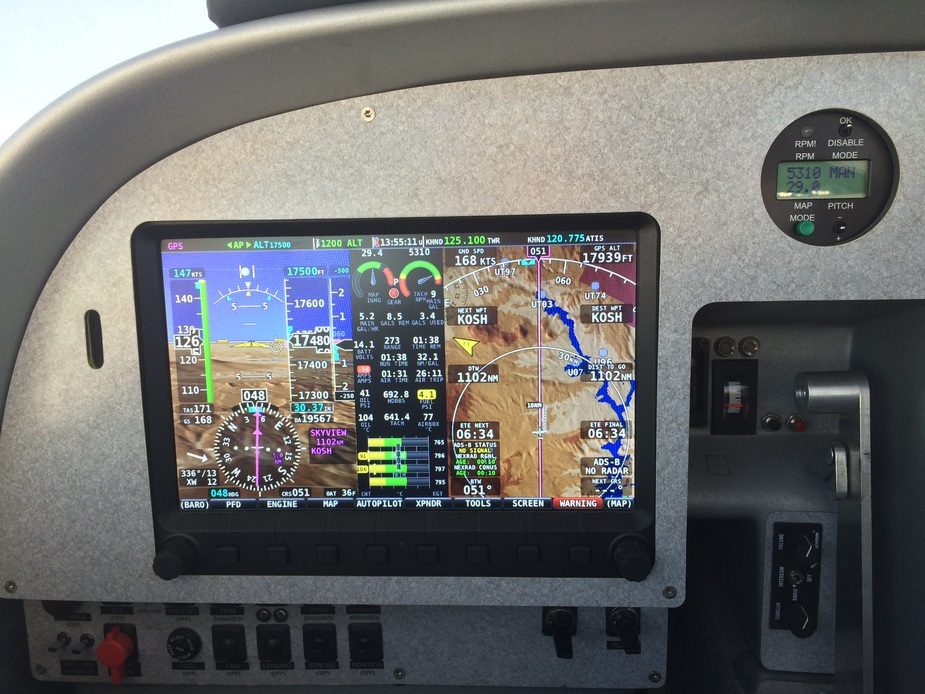Negative; most countries in mainland Europe don’t allow IFR in homebuilts, and many/most need permits even for VFR. Many previous threads 
That there is zero enforcement doesn’t change things much if someone has paid out 500k for it.
This is OK if you can get your desired mission profile out of it, but – as I well know from my pre-IR days – the sort of long distance VFR one is likely to want to do with a hi perf plane gets tricky, with wx, CAS entry, etc.
in most scenarios of relevance
You cannot cross the English channel with it you mean  Another way of seeing it is that some countries are irrelevant, but that doesn’t make it less relevant at those places where it can be used.
Another way of seeing it is that some countries are irrelevant, but that doesn’t make it less relevant at those places where it can be used.
The basic problem with high performance non-certifieds is that they are not useful in Europe, due to no IFR possible (in most scenarios of relevance) and the need for the permits makes cross-Europe travel difficult.
Nice plane, but choosing all the options (most of them essential, like engine and avionics) and you end up with $550+k. One could get an almost brand new factory built certified turbine helicopter for that, not to mention similar performance certified aircraft. They will probably sell lots of them though 
Jujupilote wrote:
Lancair Mako
That’s the first aircraft I’ve seen with lower fuel consumption at max cruise compared to “typical” cruise.
I don’t know if LAA would accept it (just no idea), but this one is pretty performing 
About 285 k$ base price, plus 90k if you want to build it at their factory in Texas.
I realized it has its own thread here but I wanted to add it in this one.
Yes, the C172 undercarriage is strong, but with ~30 psi ground pressure it is unsuitable for soft ground – and can make a real mess of prepared grass runways in winter.
Another general problem with trikes (as I found with my CH701) is that the nosewheel throws mud and gravel into the prop – that’s also why proper bush tyres have no tread.
There’s a difference between landing on a dirt road or a newly mown hayfield or some place where we know others have landed or driven a vehicle, and landing somewhere we pick off Google Earth and can only inspect from the air. To do that safely, it’s worth investing in suitable tyres and brakes.
Technically, if it has a prepared or improved landing surface, it’s an aerodrome
Not in Norway. We don’t have “aerodromes” here  We have what we refer to as “natural landing site”. A land or water area used for take off and landing where little or no preparation has been done. It could be a road, a field of gras, but also a more prepared strip. It could also be an old desolate big airport with excellent runway quality, or a big lake.
We have what we refer to as “natural landing site”. A land or water area used for take off and landing where little or no preparation has been done. It could be a road, a field of gras, but also a more prepared strip. It could also be an old desolate big airport with excellent runway quality, or a big lake.
One step up is a “small airport”. Not necessarily of better technical quality, it’s mostly about administrative stuff. Then there is also a difference if the landing site is public or private.
An aircraft can have skis or have the ability to land on water, or be a helicopter, so this categorization makes some sense.
Anyway, what I meant was the runway quality. If it’s simply a road or dirt or grass, makes little difference. A C-172 works just fine. It has to be rather rough for a C-172 not to work there, even if no particular aircraft preparation has been done.
LeSving wrote:
Have you been in a helicopter for 6 hours?
A SEP for 6 hours isn’t better.
With an autopilot I find 6-8 hours a day (i.e. 800+ miles in a typical bushplane) is as comfortable and relaxing as any other direct A to B means of transport.
If there is a dirt strip, then it isn’t “real bush” IMO. I call it “bush light”, and it’s what I usually fly Most SEPs and smaller TP aircraft can operate from those places. Hence, a 180 hp C-172 for one or two people is a a very good compromise,
Technically, if it has a prepared or improved landing surface, it’s an aerodrome, and they can be few and far between. A C-172 or 175, or any tricycle airplane needs a somewhat improved surface. So, yes, it’s a compromise. To land with confidence and safety on unchecked/unimproved and possibly rather soft surfaces, we need a couple of feet of prop clearance and low (sub 10 psi) tyre/ground pressure.
ploucandco wrote:
From my perspective, (and I am biased as I own an for more than 10 years), the Europa XS with a ROTAX 914 si the best performance against investment and operation cost. The current market is at less than 50K like this one: https://www.planecheck.com/index.asp?ent=da&id=47797&cor=y planecheck_G_FITY_47797_pdf
@ploucandco – I couldn’t agree more  The Europa is dramatically underestimated regarding bang for the bug. Even a VL3 will not outperform a Europa Monowheel.
The Europa is dramatically underestimated regarding bang for the bug. Even a VL3 will not outperform a Europa Monowheel.
